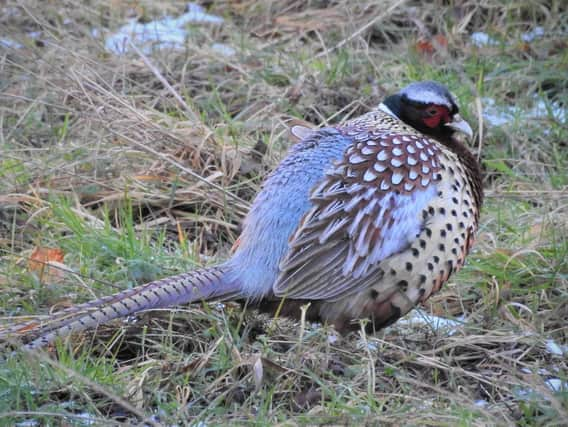Wildlife Column: Stunning Pheasants showing well


Across England this bird is increasingly common with millions bred and released into the ‘wild’ each year. Furthermore, pheasants are more and more frequent in and around the fringes of towns and cities. Some of the birds are really quite stunning as estates release different coloured varieties to boost local stock and in particular there are now pheasants which are melanistic (i.e. black) and others which are dark, bluish purple. However, at this time of year all the successful cock pheasants are in tip-top condition. The total number of birds released annually is over 35 million with around 15 million declared as the official ‘bag’.
Not a native species, the common pheasant has been with us for a long time, perhaps introduced as early as the Romans. Almost certainly it died out but was reintroduced in numbers from around the 1400s and has grown to become one of the most significant ‘game birds’. In the early 1900s, the most important lowland game-bird was the English or grey partridge, a species that has declined due to farming intensification and pesticide use, and maybe competition from the imported red-legged partridge.
Advertisement
Hide AdAdvertisement
Hide AdThe pheasant pictured here was at Chatsworth Park in Derbyshire and this view was as the bird prepared to go to its afternoon roost close-by. This rather tranquil rural scene was shortly after a cousin of the pheasant, the upland red grouse, hit my car windscreen. The bird left an imprint across the window which turned out to be oil from its feathers but combined with a sharp indent into the glass where its beak hit hard.
The effect for me and the car was a bit like being hit by a bag of potatoes; for the grouse, which is a heavy bird, I suspect the result was catastrophic. I couldn’t see the bird on the road either at the time (in the rear view mirror) or when I drove back later. I hope it survived but I suspect not. Professor Ian D. Rotherham, of Sheffield Hallam University, researcher, writer and broadcaster on wildlife and environmental issues.????????????????????????????